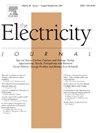纯电动卡车车场充电的基础设施成本
IF 2.2
Q1 Social Sciences
引用次数: 0
摘要
电动汽车(EV)车场充电对于卡车车队运营商将其传统车辆转换为零排放车辆(zev)至关重要。本研究以加利福尼亚州为背景,并考虑了两个示例车队:中型运输卡车车队和重型短途卡车车队。假设卡车在仓库通过直流(DC)快速充电器(50 kW、150 kW或350 kW)或大功率2级充电器充电,我们估计充电基础设施成本是电动汽车车队规模的函数。结果表明,随着车队规模的增加,每辆车的基础设施成本将大幅下降,尽管基础设施成本对充电器利用率非常敏感。充电器利用率越高,基础设施成本就越低,因为电池厂需要安装的充电器越少。因此,降低成本的策略之一是提高日常利用率,以减少充电器数量需求,从而降低基础设施成本。本文章由计算机程序翻译,如有差异,请以英文原文为准。
The infrastructure cost for depot charging of battery electric trucks
Electric vehicle (EV) depot charging is critical for truck fleet operators to convert their conventional vehicles to zero-emission vehicles (ZEVs). This study uses California as the context and considers two example fleets: a fleet of medium-duty delivery trucks and a fleet of heavy-duty short-haul trucks. Assuming trucks are charged at a depot by direct current (DC) fast chargers (50 kW, 150 kW, or 350 kW) or high-power level 2 chargers, we estimate charging infrastructure cost as a function of the EV fleet size. Results indicate that per-vehicle infrastructure cost would decrease substantially as the fleet size increases, though infrastructure cost is very sensitive to charger utilization rates. The higher the charger utilization, the lower the infrastructure cost would be, as the depot would need fewer chargers installed. Therefore, one cost reduction strategy is to improve daily utilization rates to reduce the charger count demand and thus reduce the infrastructure cost.
求助全文
通过发布文献求助,成功后即可免费获取论文全文。
去求助
来源期刊

Electricity Journal
Business, Management and Accounting-Business and International Management
CiteScore
5.80
自引率
0.00%
发文量
95
审稿时长
31 days
期刊介绍:
The Electricity Journal is the leading journal in electric power policy. The journal deals primarily with fuel diversity and the energy mix needed for optimal energy market performance, and therefore covers the full spectrum of energy, from coal, nuclear, natural gas and oil, to renewable energy sources including hydro, solar, geothermal and wind power. Recently, the journal has been publishing in emerging areas including energy storage, microgrid strategies, dynamic pricing, cyber security, climate change, cap and trade, distributed generation, net metering, transmission and generation market dynamics. The Electricity Journal aims to bring together the most thoughtful and influential thinkers globally from across industry, practitioners, government, policymakers and academia. The Editorial Advisory Board is comprised of electric industry thought leaders who have served as regulators, consultants, litigators, and market advocates. Their collective experience helps ensure that the most relevant and thought-provoking issues are presented to our readers, and helps navigate the emerging shape and design of the electricity/energy industry.
 求助内容:
求助内容: 应助结果提醒方式:
应助结果提醒方式:


